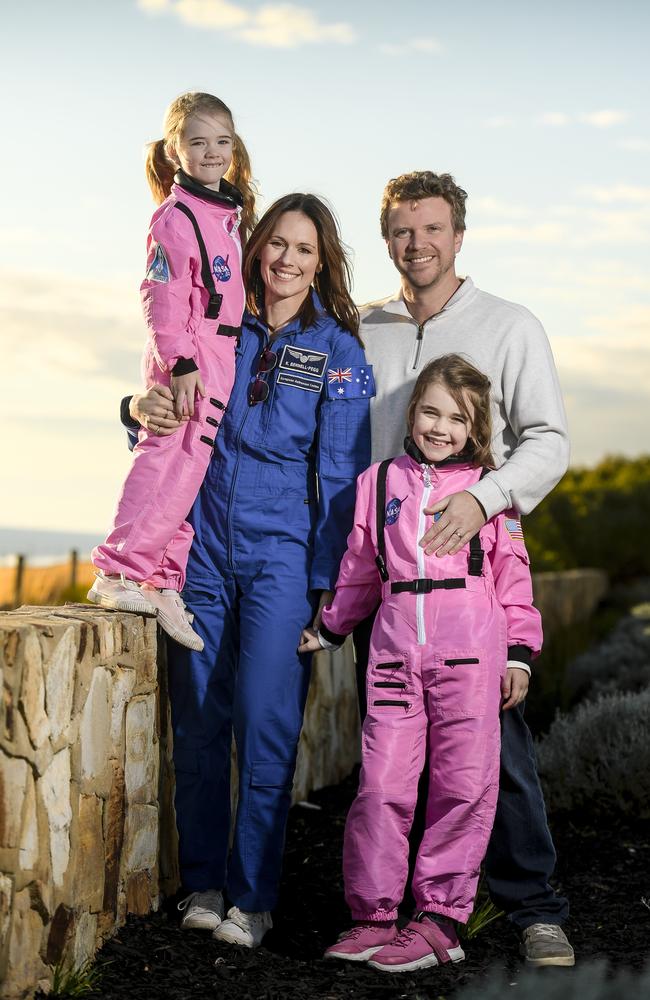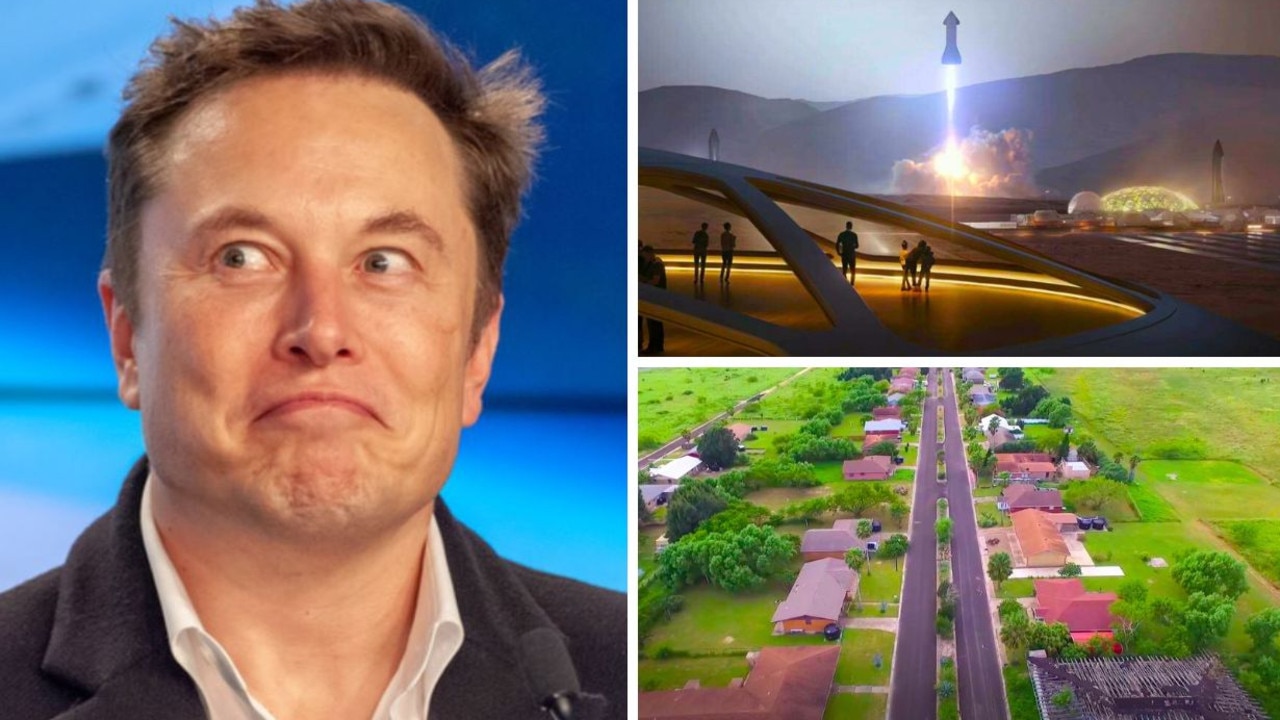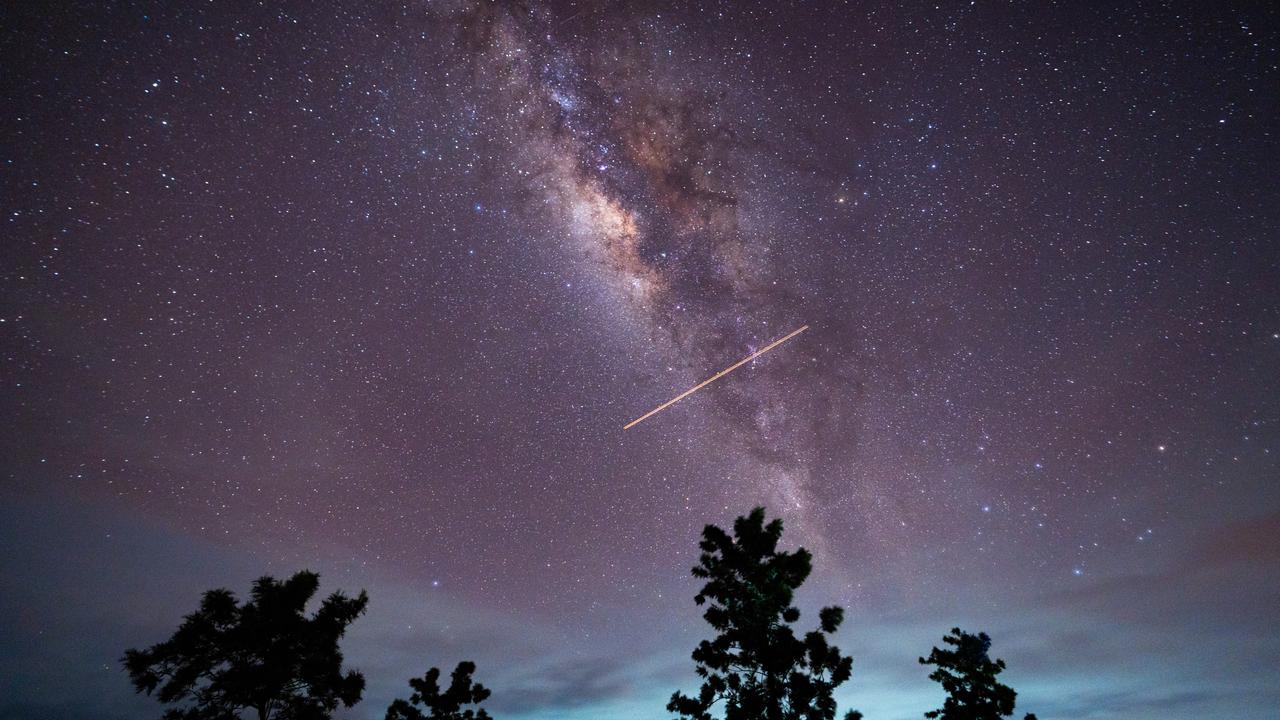This is what Australia’s first female astronaut really thinks about aliens
Australia’s first female astronaut has revealed what she truly thinks about aliens and the possibility of life on other planets.

Think about every tiny grain of sand that exists on every single beach in the entire world.
How many do you think there are? Does any number spring to mind?
Scientists place it at about 200 sextillion, or 200 billion trillion grains of sand. An impossible number to wrap your head around, featuring 23 zeros at the end.
For each grain of sand on earth, there could be even more stars in the universe. Can you even fathom this?
It is something Katherine Bennell-Pegg ponders everyday. The 39-year-old mum is Australia’s first female astronaut and a trailblazer in her field.

Speaking at Sydney’s recent South by Southwest conference, she eloquently answered some of the audience’s most cosmic queries about the universe, including the age-old question that has been plaguing humans since Galileo’s time.
Could there be life on other planets?
“There are definitely aliens out there,” she smiled.
“I don’t think they walk among us, even if it feels like that sometimes.
“Given the scale of the universe, we think there are somewhere between 100-200 sextillion stars in the universe.
“That is similar to the number of grains of sand on all the beaches on earth.
“All the ingredients for life, the molecules and elements we need, are the most abundant in the universe.
“We’ve just started looking at exoplanets with space telescopes, and just in the last six years we’ve found almost 6000 exoplanets, that is planets around other stars.


“Many of them are in what could be a habitable zone. I just think, odds are, life is out there.
“The interesting thing is though, if it is, will we ever be able to communicate with them?
Who knows.”
Ms Bennell-Pegg said that given the scale of what could be out there in the cosmos, she is most curious about the possibility of finding life “closer to home”.
“I’m really interested in whether we can find evidence of life on other planets within our own solar system,” she explained.
“We’re looking for it on Mars and we are about to be looking for it on the moons of Jupiter, which is thought to have liquid water beneath the icy crusts.
“Europa clipper, which is a mission just launched, will be looking for that.

“It would be so interesting to find out if that life has the same genesis to us or different, which would mean life is probably abundant in the universe.
“More practically, this study in astrobiology, which is life off earth, teaches us about how life can evolve to be more resilient to life on earth as well.”

What tastes good up in space?
Ms Benell-Pegg also spoke about some of her incredible career highlights and some interesting things about space that we might not have ever realised about being an astronaut – including the art of eating up in space.
“The first time I got to work on something that was going to go to space was a huge moment,” she beamed.
“To have been dreaming my whole life of wanting to work in space, I was so excited. That was it for me.
“I felt like it was a dream unlocked.
“Every time now I’ve got to a point like that, I discover there is more and more. It’s been phenomenal.”
Asked what she would like to eat more up in space, she had a very Australian answer.
“You can eat lots of things in space, just not anything that creates lots of crumbs,” she revealed.
“Due to the lack of gravity, it would get in someone’s eyes or nose or something if it broke apart.

“You also can’t get anything with live culture in it, in case it goes bad.
“You don’t really like sweet stuff, you crave spicy and umami foods because you feel a bit stuffed up, as there is a lot of fluid in your head.
“I think Vegemite would be a favourite, I’d definitely take that up there with me.
“There might even be some space pavlova. It’s pretty crumbly though, so they’d have to work hard at making it easy to eat up there.”
Scariest part about being in space
Asked if there is anything that “scares” her about space, she revealed that there is a very real danger to astronauts who find themselves on space walks.
“Nothing about space terrifies me,” she said.
“But one of the things all astronauts worry about is when you’re up in space, you’re far from your family and there is a fear about something happening to them on earth.
“Space debris is becoming a big problem. If an astronaut gets hit by a tiny bit of space debris during a walk, it will be pretty devastating.
“Space debris is actually one of the greatest issues facing us in respect to our mission to utilise space for the good of us on earth.”

Ms Bennell-Pegg now works for the Australian Space Agency in Adelaide and was the first person to ever be trained as an astronaut under the Australian flag.
In 2023, she made the giant leap towards achieving her lifelong dream of going into outer space when she began training with the European Space Agency (ESA) in Germany.
She and her five fellow astronaut candidates from the ESA graduated with their basic training earlier this year and are now qualified for assignment to the International Space Station.
Becoming an astronaut was always her dream as a child and she hopes that one day there will be even more diversity in the field.
“For me, it was lying up at the grass looking up at the stars as a kid,” she said.
“When I realised that some of those stars were not stars, but planets and entire worlds that nobody had ever seen with their own eyes or walked on them.

“That childlike curiosity made me want to explore. Then when I got older, I fell in love with science and wanted to be involved in space discovery.”
She excelled at school, studying maths, English, chemistry, physics, and economics in her senior year.
More Coverage
In 2007, Ms Bennell-Pegg graduated with a Bachelor of Engineering (Honours) – Aeronautical Engineering (Space) and a Bachelor of Science (Advanced) – Physics from the University of Sydney.
She has worked across Europe on a range of space projects, including on spaceflight missions and technologies, facilities for the International Space Station, debris removal concepts, Earth observation, and space exploration missions.
She has two daughters with her husband, who also has a career in space. The family returned to Australia in 2019, with the couple joining the Australian Space Agency.






